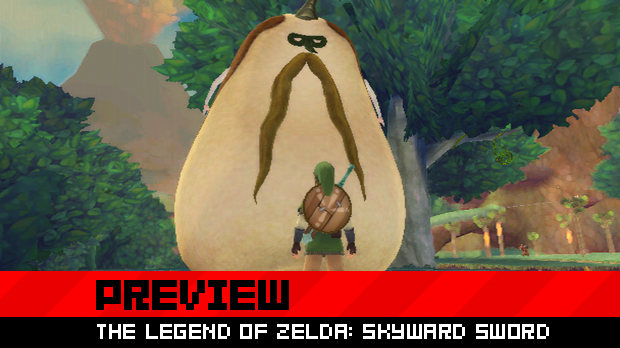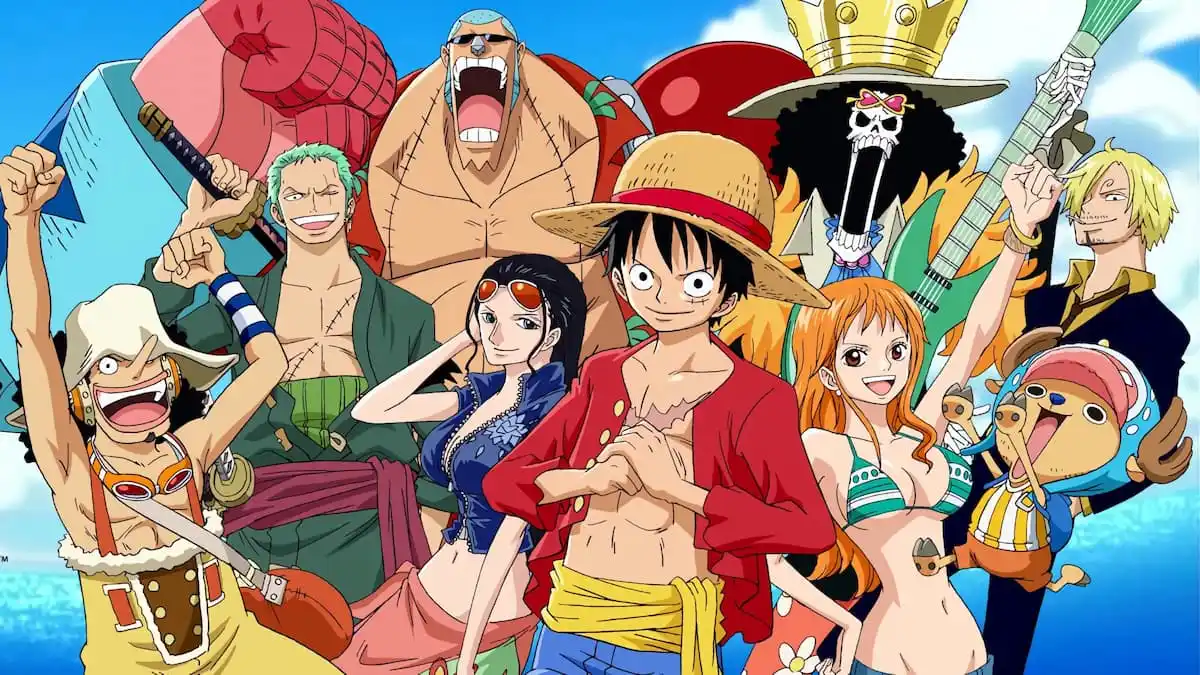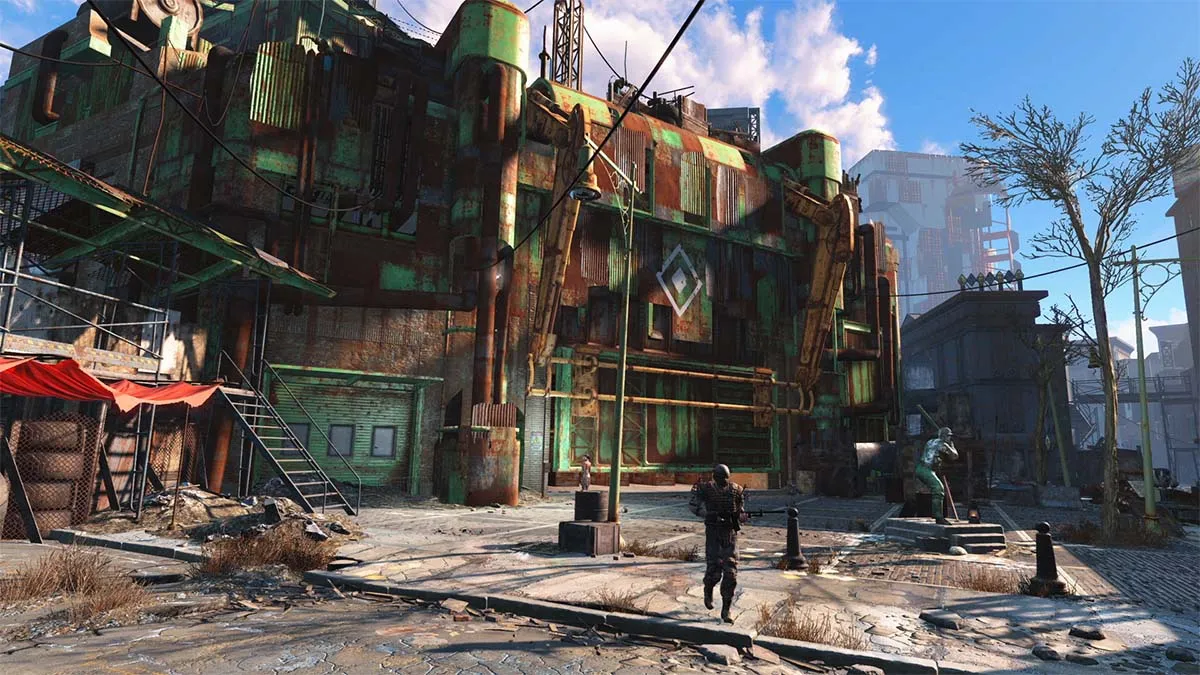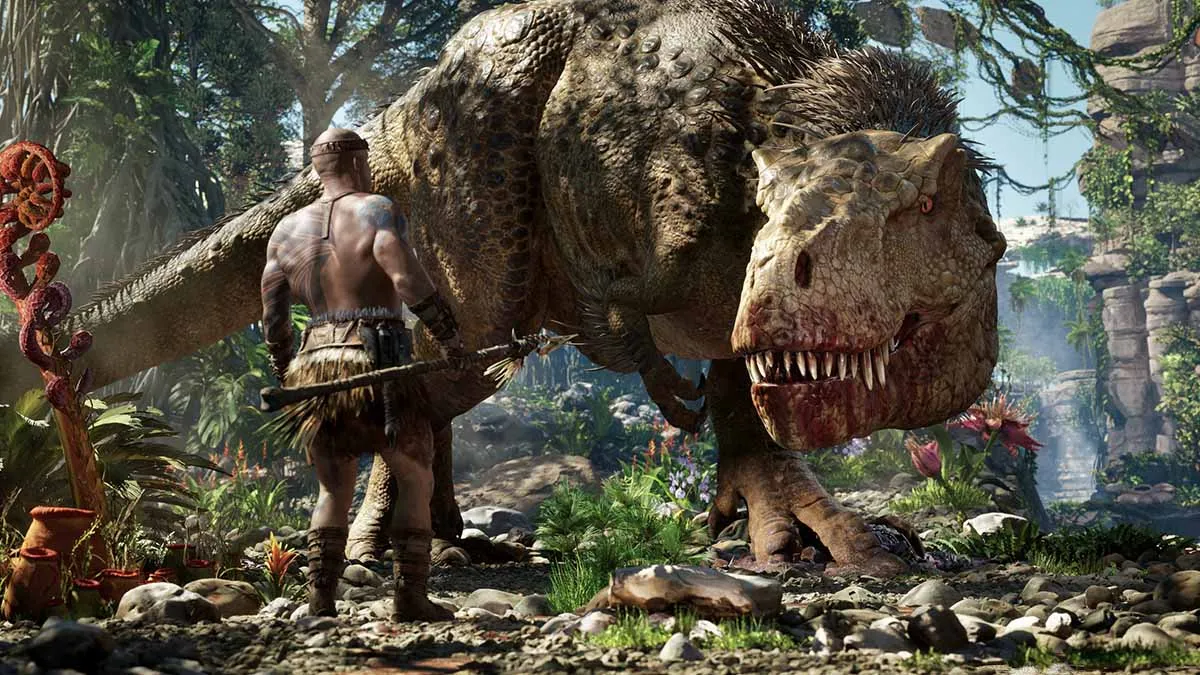In our last look at The Legend of Zelda: Skyward Sword, we were introduced to the floating city of Skyloft and Link’s obstacles towards knighthood. We met Zelda again as we would meet any old friend, yet she was soon taken away; we were once again thrust into an adventure fraught with danger and impending doom.
Throughout the last preview, little was discussed about the real meat and potatoes of Skyward Sword — what makes this new Zelda game so exciting and novel compared to previous Zelda titles. Sure, the concept of intuitive motion controls was teased, and a more fluid way of navigating the world was discussed, yet sorely lacking was a look at one of the key elements that has defined every single Zelda game from the very first adventure on the Nintendo Entertainment System.
The big question on the minds of most Zelda fans and pretty much anyone who has any interest in a Zelda title is this: How are the dungeons in Skyward Sword? This is not a question that can be answered in a single sentence. In fact, it’s not an easy question to answer in a number of paragraphs, but I’ll certainly try.

The Legend of Zelda: Skyward Sword (Wii)
Developer: Nintendo
Publisher: Nintendo
Release: November 20, 2011 (US) / November 18, 2011 (EU) / November 23, 2011 (JP)
Let me calm your fears right now: I’m not going to do a complete dissection of the first dungeon and every single element found within. I chose to do a detailed walkthrough for the last preview to give you an idea of just how huge this game is, how expansive the city of Skyloft is, and how much freedom of movement Link is given in this world.
Instead, I’ll start with a brief play-by-play and go more into detail about the elements of Skyward Sword that took me aback at the fact that I was playing a Zelda game. After all these years and countless iterations, it felt once again like the first time I played A Link to the Past or Ocarina of Time. Yes, I believe this game has the potential to sit among (arguably) the greatest of the Zelda franchise, but I’m getting ahead of myself. Let’s go back to where we left off.
Soon after Link obtains the Skyward Sword, Fi tells him that he must travel to the clearing in the clouds and the world below to find Zelda. At this point, the game world truly opens up, and you’re free to tackle the missions or sidequests at your own leisure. You’re encouraged to grab a shield from the shop or wherever you can find one.

Once I obtained my first shield, I noticed an immediate difference in how Skyward Sword treats its item management. My shield was a cheap, barely durable wooden shield, as they often are in recent Zelda games. However, not only was it flammable, it was also not at all impenetrable to enemy attacks. With your first shield comes the realization that you’re a much more vulnerable hero this time around.
Certain equipment — notably your shield, in this case — will actually deteriorate over time from use (i.e. deflection) and eventually get destroyed completely. At first, I was incredibly wary of this new addition, because item deterioration in other games (I’m looking at you, Fallout 3) always tends to frustrate me. Though I appreciate the “realism” approach of this sort of gameplay wrinkle, I really hate losing my favorite weapon simply because it stops working after awhile.
However, as I got further into the game and lost one of my shields through combat, I came to realize that this new wrinkle actually adds an interesting twist to the game. While you are technically more vulnerable without a shield, you also find yourself approaching combat scenarios in a very different way. Instead of holding up a shield and relying on the old bait-and-switch tactic, you really start to focus on understanding the movement patterns of your enemies. You’re forced to actually approach each fight carefully, watching enemy movement and waiting for the best opportunities to strike or evade.

Soon after landing in a clearing of a forest (the province of this forest is quite recognizable to those who have played Twilight Princess), I was taught how to dowse. Dowsing requires me to point my sword in first-person view mode and treat it like a compass until it beeps and vibrates enough to give me a direction to go towards. After learning that, I had to face my first “real” enemy of Skyward Sword. While the Keese and Gels that I had encountered before offered little challenge, the red Bokoblins — small, stout goblins bearing a more ogrish resemblance to the moblins in Wind Waker — provided the first true fight.
And what a fight it was! After slashing and stabbing with wild abandon, I nearly got my ass handed to me by a small group of Bokoblins. I found myself at half a heart, wildly slashing bushels of grass and running as far away as I could. For once in as long as I can remember, I was actually challenged by the lower tier enemies in a Zelda game. I managed to find a few hearts and rushed back into battle, this time being careful to really pay attention to how the Bokoblins moved.
In Skyward Sword, enemies holding any assortment of weapons and/or shields will undoubtedly provide a threat. They pay attention to your moves and block accordingly. They hold their weapons and shields in shifting patterns, and you have to pay attention to what they’re doing at all times to even get in a good hit. Combat with these enemies is where the MotionPlus aspect really comes into play. It’s where I had my first moment of realization that this was a different game altogether.

In Twilight Princess, you fought by waving the Wiimote around like a maniac. This sort of gameplay was looked down upon by many, especially those who wanted to see the game released earlier on the GameCube with a regular controller. I have to admit that I wasn’t a huge fan of the Wiimote swordplay in that game myself. I eventually tried to exert as little effort as possible to get my sword swings to register, and even doing this tired me out because of mediocre and repetitive battles where I mainly just swung the Wiimote a bunch of times and then jabbed forward with the nunchuck to get a shield blow in.
Skyward Sword is not like this at all. My first battle with the red Bokoblins and every combat scenario afterwards continued to surprise and impress me with varied gameplay. My first wooden shield turned out to be relatively useless, and I started to really focus on using the Wiimote as if it were actually a sword. I parried and countered at the best of my ability, often getting my ass handed to me. The controls throughout these scenarios were precise and fluid; not once did I feel frustrated at the game because it registered my swings incorrectly. Instead, I got frustrated at the Bokoblins because they were so damned clever, always one step ahead of my moves, blocking my high swings and countering my low thrusts. However, if I waited for a moment and watched how they moved, I could get an opening through the areas of their bodies that they weren’t defending.
After defeating hordes of Bokoblins and a few Deku Babas, I found my way down a path to the bottom of the clearing, where I came across a strange stone with an engraving. At this point, a new trick that Fi had previously taught me with the Skyward Sword came into play. Like He-Man, I was instructed to hold my magical sword aloft. I sort of felt like a dork doing this in a room full of journalists and Nintendo reps, but if I didn’t hold the sword (Wiimote) high above my head and as vertically as possible, the trick wouldn’t work. When I finally gave in and pretended I was inheriting the power of Greyskull, I did actually inherit some mystical powers from the heavens. Fi then told me to aim the charged sword and strike at the stone, and I complied. Immediately, a bunch of holes in the ground along the path I had clambered down begin to shoot steam, and a new pathway above through old stone doors opened up. I took no time in running across one of the holes, and with the help of my sailcloth, I was sent soaring above.

After a brief session of talking to some mystical figure living in a cave then being sent on my way, I travelled deeper into the woods and came across a strange little forest creature called a Kikwi, trying in vain to pass itself off as a bush. Once the Kikwi knew I was not a dangerous Bokoblin, it instructed me to go visit the Elder Kikwi living further ahead. I took some time figuring out how to get to the elder, and once I did, I was sent on my way again to find three other Kikwi under his charge before he would help me in my search for Zelda.
This part sort of reminded me of the wolf sections in Twilight Princess, where you’re sent looking after a number of tears of light. I was not a fan of those parts of the game, as there seemed to be too many tears to look for, and they weren’t always interesting to find. In this case, however, every time I found a Kikwi, I also discovered a new area of the map that I hadn’t seen before, usually with its own batch of secrets and further areas to explore. I actually enjoyed looking for the Kikwi, as it required me to swing across vines, climb up new areas, and generally explore the surroundings until I found the little guys and caught them.
After all of this was finally completed, I was given passage to the Sky Temple. At this point, I decided to head back to Skyloft for some potion — a relatively painless venture, as there are bird statues scattered around just about everywhere that serve as both save points and fast travel locations. Once you’re back in the sky, you actually have to fly your bird back to Skyloft, and when you’re flying over the city, you get a true idea of just how huge it is. Once I skydived into the main bazaar and purchased the items I needed, I jumped off of a Skyloft platform and took my bird back to the clearing, where I was given the option to travel directly to the bird statue outside of the Sky Temple.

I don’t want to ruin too much of puzzles within the temple itself, as I’m all about discovery in Zelda games. I’ll tell you this though: The puzzles this time around are outright devious. Fi doesn’t provide nearly as many contextual clues as Navi did, though the Sheikah stones from the Ocarina of Time remake do make an appearance in Skyloft.
The main enemies in the Sky Temple are a new form of Skulltulas, and these guys are freaking hard. As in previous Zelda games, they have hard outer bodies and a weak spot in their bellies, but this time around, this actually means something in the context of fighting them. They weave webs in different patterns, requiring you to think about how you will approach the next battle. The scariest prospect comes when a Skulltula is not hanging down from a thread or within a web but crawling towards you on the ground, as they can be the most dangerous when they’re free of their webbing.
The whole map/compass dynamic is gone. Instead, you automatically get the location information you need once you acquire a map. You’ll definitely need to consult the map in the Sky Temple and any dungeon you face, as there are many different pathways to get to a room, and a keen eye for detail is paramount to figuring out your next move.
The big item of this dungeon is the beetle that you may have seen in earlier previews. I’ll tell you this right now: I think the beetle might be my favorite addition to any Zelda game ever. This isn’t hyperbole, either. You see, I grew up loving bugs, and being able to control an awesome little remote-controlled sort-of bug device made me more excited than you may ever know. Furthermore, the controls are incredibly precise; the beetle is really useful for various tasks, including cutting down hanging objects (think webbing, etc.) and getting into tight spots to hit switches. It’s also just a lot of fun to let loose and fly around.

Speaking of bugs, there are bugs EVERYWHERE in Skyward Sword, and not just little sparkly white things that you find in hidden areas. The bugs actually play an important role in the economy of the game, but I’ll get to that in a later preview. I just was really excited to see little ladybugs and grasshoppers and various other insects make the world of Skyward Sword feel more alive. When I realized you might be able to catch them all, well …
Anyhow, after spending at least another couple of hours just getting through the dungeon and fighting a relatively challenging Stalfos Warrior miniboss, I faced my first real boss: Demon Lord Ghirahim, the strange, almost androgynous yet somehow vaguely sexualized character who will reappear to antagonize Link throughout the game. Lord Ghirahim toys with you, and fighting him is a real challenge. At first, he simply holds his hand close to your sword and waits for your move, like a cat playing with a mouse. If he grabs your sword, you have to quickly thrust it up and out of his hands before he takes it away. Every once in awhile, you’re able to trick him by bringing your sword in one direction and then doing something unexpected with a slash in an entirely different direction.
Eventually, Lord Ghirahim switches tactics and starts rushing you. This is when the battle becomes really hard, and I died the first couple of times. Though I didn’t have a shield, I could have still defeated him at this point had I only remembered to swipe in one direction for a spin attack when he rushed to my left and the other when he rushed to my right. I failed at sword mastery, though, and this failure was met with my quick demise.

I had to give in, and after another quick trip to Skyloft, I faced him again with my cheap wooden shield. This time, I found that attacking him when he rushed me was a lot easier, as I could block him without too much damage to my shield and then attack him as he regained his composure. I defeated Lord Ghirahim, though he mostly just got bored of toying with me and took off.
He’s still a very enigmatic and mysterious figure in the game, and all that could be really gleaned from interactions with him is that he’s an evil and power-hungry being who is in search of Zelda as well. Ghirahim tells me that Zelda’s lingering presence is fading and then takes his exit. I collect a new Heart Container and a strange shard that fits into the base of the Goddess Statue on Skyloft, then I’m on my way again, soaring through the clouds back to Skyloft on my Crimson Loftbird.
This concludes my time with the first dungeon of Skyward Sword, though it certainly isn’t the end of the preview coverage. Look out for more on The Legend of Zelda: Skyward Sword leading up to the game’s release!




